32 ‘under-the-radar’ NFL rookies to watch in 2016
The Cardinals signed safety Tyvon Branch, who is versatile enough to play cornerback as needed, but they still needed depth behind Patrick Peterson and Justin Bethel. They got that in the sixth round with Harlan Miller. He didn’t test great at the Combine (4.65 40-yard dash, six reps on the bench press), but he impressed at the Senior Bowl with his feistiness and footwork. He could be a reserve corner in the short term until he can get a little stronger and faster.
(Jonathan Bachman / AP)South Florida Sun-Sentinel
The first and second-round picks get all the hype entering NFL training camp, but the later picks also can make an immediate impact. Here is one rookie for each team taken in the third round or later who have a good chance to contribute from the get-go.
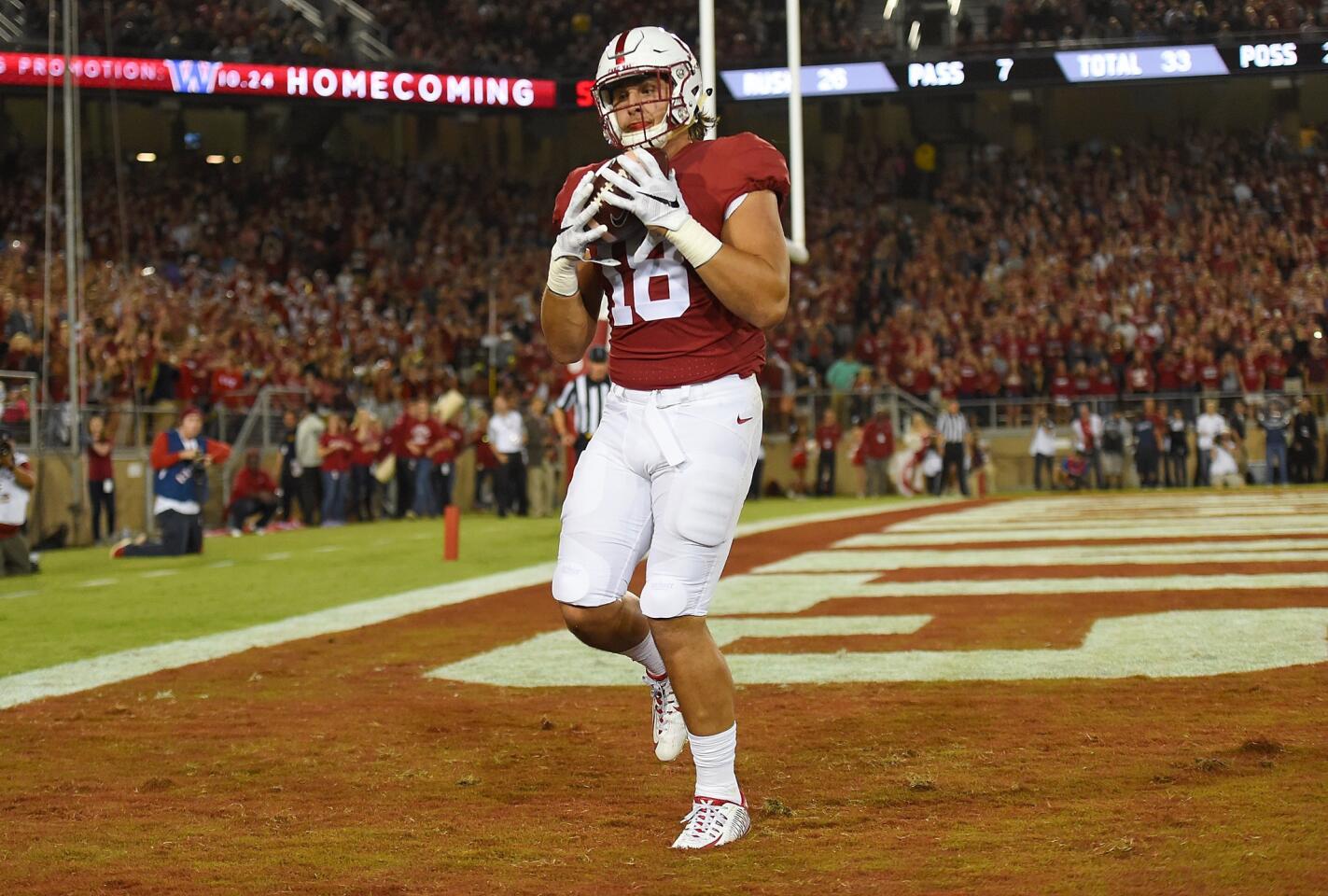
The Falcons have lacked a viable option at tight end since Tony Gonzalez’s retirement after the 2013 season. They hope they found their long-term answer in the third round with Austin Hooper. Hooper is the latest Stanford tight end to make the jump to the NFL, following current Falcon Levine Toilolo along with Zach Ertz, Coby Fleener, Ryan Hewitt and Jim Dray. Hooper can be a solid security blanket for Matt Ryan, particularly in the short to intermediate areas of the field, and could challenge Toilolo and Jacob Tamme for a starting spot.
(Thearon W. Henderson / Getty Images)
Justin Forsett will turn 31 in October and is coming off a broken arm. Buck Allen will be back after a good rookie season, but the Ravens dipped into a talented draft class again this offseason with their fourth-round selection of Kenneth Dixon. The Louisiana Tech product has the shiftiness to elude defenders, the hands to catch passes out of the backfield and the awareness to pick up blitzes. He’ll likely make the Ravens’ backfield a three-man committee as a rookie.
(Parker Waters / AP)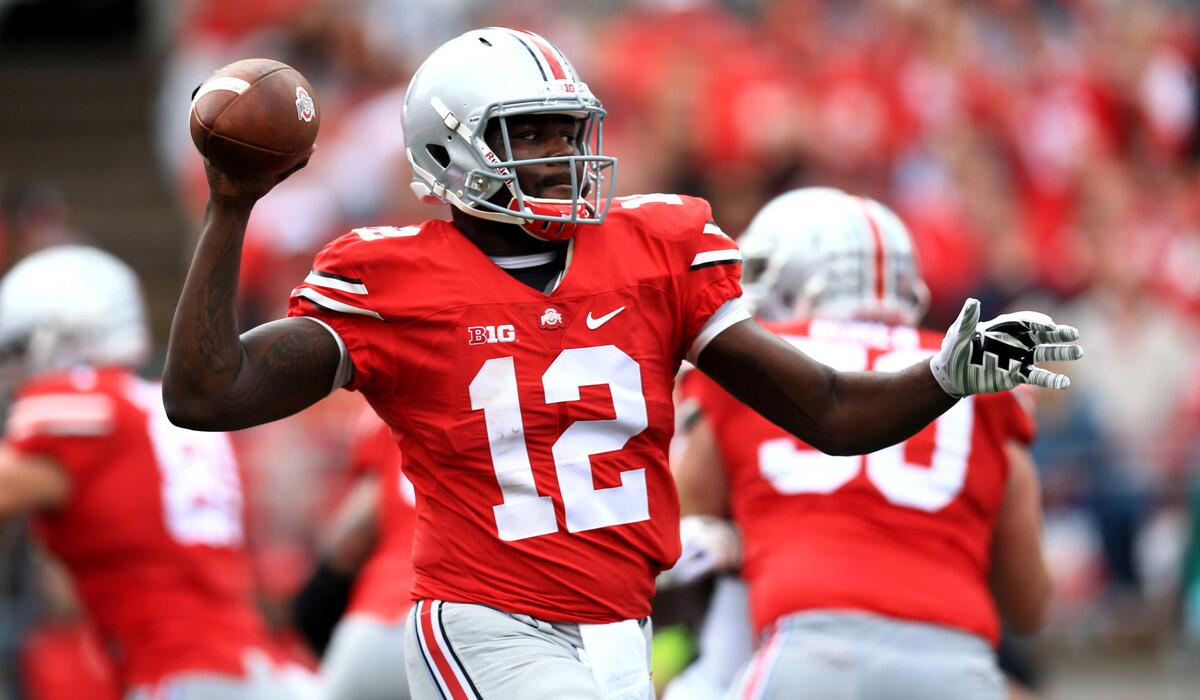
The Bills whiffed on 2013 first-rounder EJ Manuel, and Tyrod Taylor is entering the final year of his deal. They needed some insurance in case Manuel doesn’t make the jump or Taylor doesn’t re-sign, so they took Ohio State’s Cardale Jones late in the fourth round. Jones burst onto the scene late in the 2014 season while leading the Buckeyes to the national championship but lost the starting job last season due to inconsistency. He has a tantalizing mix of size, speed and arm strength, but he needs a lot of development with his technique.
(Andrew Weber / Getty Images)Advertisement
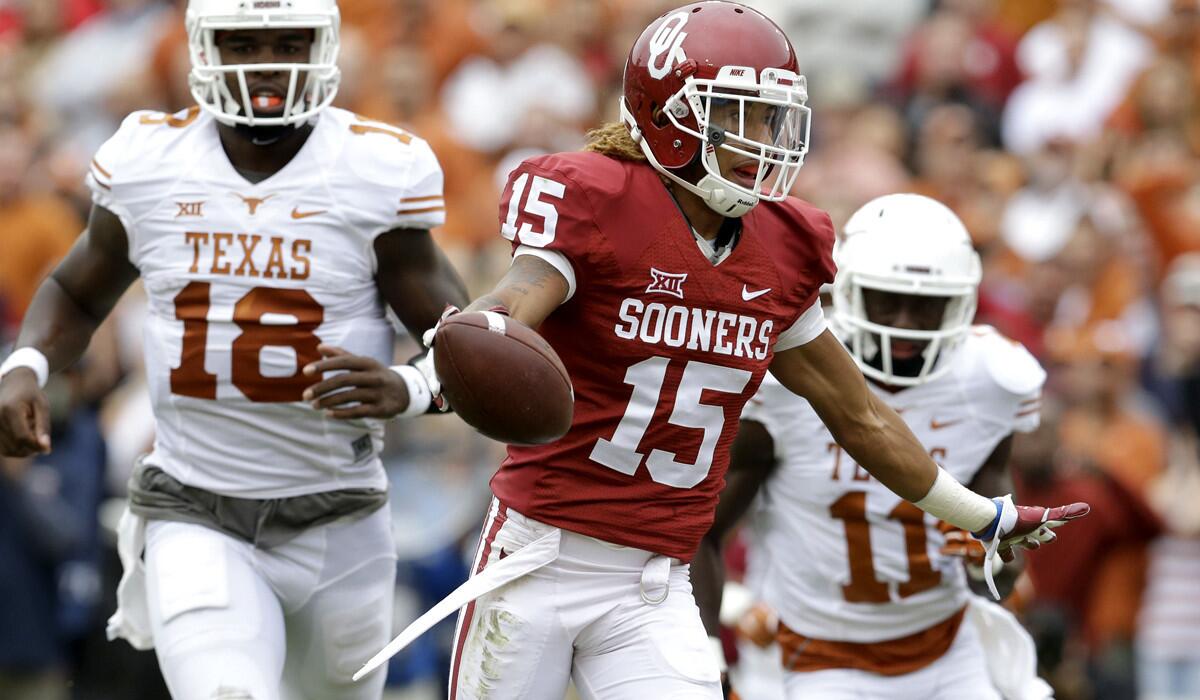
Carolina rescinded Josh Norman’s franchise tag about a week before the draft, then replaced him with three players in the draft. The biggest name of the trio is fifth-rounder Zack Sanchez from Oklahoma. Sanchez is an aggressive ball-hawk who hauled in 15 interceptions in three seasons with the Sooners. He doesn’t have ideal size at 5-11 and 185 pounds, and he’s sometimes prone to giving up big plays, but his instincts and ball skills could earn him playing time early, particularly at nickel cornerback.
(LM Otero / Associated Press)
The Bears let Matt Forte leave for the Jets, and while they still have Jeremy Langford and Ka’Deem Carey to handle the majority of the workload, they still needed a powerful back who can grind out short-yardage situations. Fifth-round pick Jordan Howard could be that guy. The Indiana product and former UAB transfer has good size at 6-foot and 230 pounds and runs downhill with good vision. He battled a few injuries in college, but he’d see significantly less work as a complementary back instead of as a lead guy.
(Chris Howell / AP)
We had the Bengals taking Baylor defensive tackle Andrew Billings in the first round in our mock draft 4.0 back on April 1. Here’s what we wrote at the time: “Billings is a strong, versatile prospect who can be an immediate starter at virtually any spot in any scheme. The former high school weightlifting champion has good size at nearly 6-1 and 311 pounds and has a good mix of speed and power. He can rotate in at either DT spot this season and replace Peko in 2017.” Well, the Bengals got Billings, but in the fourth round because of questions about whether he was more than just a two-down run-stuffer in a passing league. But regardless of draft slot, our assessment still stands - Billings could contribute now and provide insurance should Peko leave after the season.
(John Raoux / AP)
The Broncos matched Miami’s offer sheet for former undrafted free agent C.J. Anderson and re-signed Ronnie Hillman to a one-year deal. Then they used a late fourth-round pick on Utah’s Devontae Booker, who John Elway said was the No. 2 running back on their board. Booker fell because of a torn meniscus last November and his age (he’ll be 24 at the end of May), but his patience and well-rounded skillset make him a great fit for Gary Kubiak’s one-cut, zone-run scheme. He’ll push Anderson for playing time early on and could eventually become the Broncos’ lead back in time.
(Rick Bowmer / Associated Press)Advertisement
The Lions secondary has some quality young players in Darius Slay, Nevin Lawson and Quandre Diggs as well as a steady centerfielder in Glover Quin, but they needed a hard-hitting, enforcer-type of strong safety. They got exactly that in the fourth round with Southern Utah’s Miles Killebrew. Killebrew is a hammer who gives the Lions an imposing presence as a box safety or even as an occasional linebacker in the Deonne Bucannon or Mark Barron mold. He could nail down a Week 1 starting job should he beat out Rafael Bush and Tavon Wilson in the preseason.
(L.G. Patterson / AP)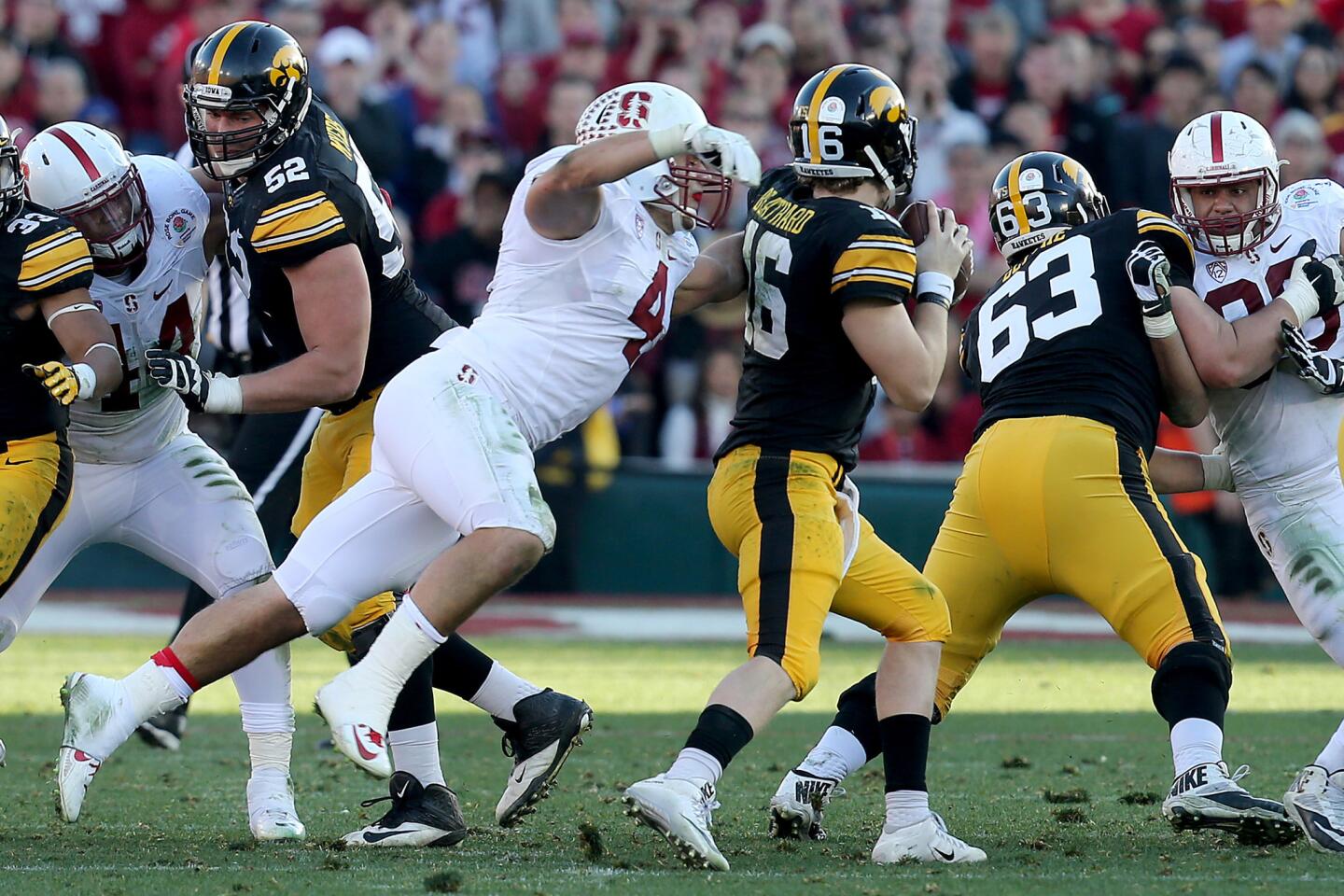
After about a season and a half of playing inside for the Packers, Clay Matthews will move to his more natural position of edge rusher. That left a hole in the middle, which the Packers filled in the fourth round with Stanford’s Blake Martinez. Martinez is a physical presence who can stop the run and drop back into pass coverage. He’ll have to challenge Sam Barrington and Jake Ryan for a starting job, but he could make an impact early.
(Luis Sinco / Los Angeles Times)
The Texans revamped their offense this offseason, signing quarterback Brock Osweiler and running back Lamar Miller. After drafting Will Fuller in the first round and Braxton Miller in the third, they added another all-purpose playmaker in the fourth round in Tyler Ervin. The 5-10, 192-pound San Jose State product is one of those players coaches will find a way to get the ball in his hands, whether it’s as a running back, slot receiver or kick returner. He’ll likely begin behind Miller on the depth chart, but he could be good for a few touches per game.
(Brynn Anderson / AP)
The Colts have solid starters along the defensive line and didn’t necessarily need to add another player there. But in a deep class, it’s always a good idea to add someone who could eventually become a starter, and that’s what they did in the fourth round with Hassan Ridgeway. The Texas defensive tackle has the versatility to play nose tackle or end as well as the quickness to get into the backfield on passing downs. He’ll need to show that he can stay in shape, but if he can do that he has the talent to anchor the Colts’ line at any spot and pair with Henry Anderson to make a potent young tandem.
(Michael Thomas / AP)Advertisement
Everybody knows about Jalen Ramsey and Myles Jack, but one of the Jaguars’ later picks that also could make an immediate impact is Sheldon Day. The fourth-rounder out of Notre Dame is a penetrating three-technique tackle who has a knack for getting into the backfield. He could rotate in with Sen’Derrick Marks and Roy Miller and bolster the Jaguars’ pass rush alongside Malik Jackson and Dante Fowler.
(Gregory Payan / AP)
The Chiefs lost Sean Smith and Tyvon Branch in free agency, and Husain Abdullah retired, leaving the Chiefs thin in the secondary. They drafted three cornerbacks who could make immediate impacts, with the biggest name of the bunch being third-rounder KeiVarae Russell. The Notre Dame product is a versatile defender who can play cornerback or free safety, but he slipped because he broke his leg at the end of the 2015 season.
(Michael Conroy / AP)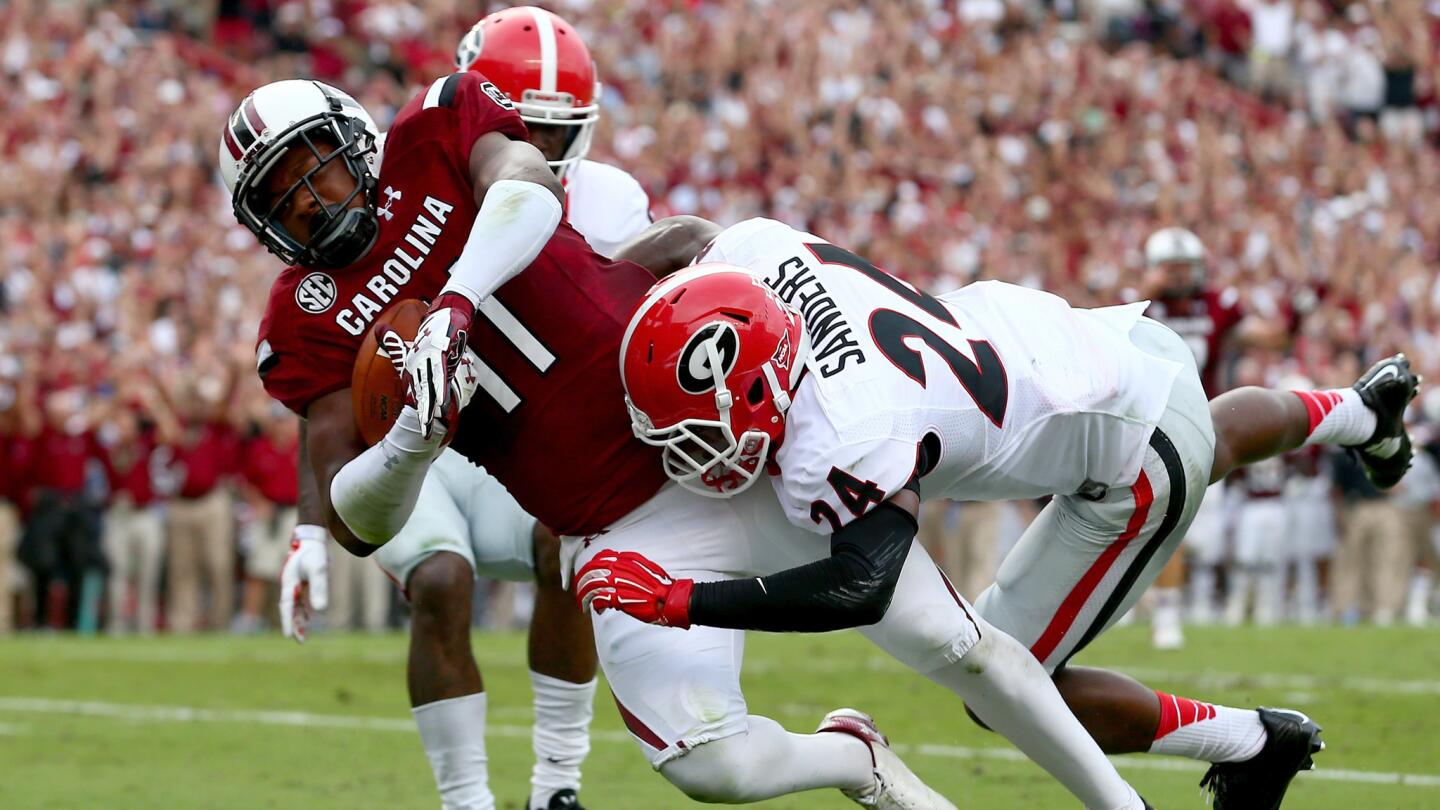
The Rams drafted their quarterback of the future in No. 1 overall pick Jared Goff, then proceeded to surround him with pass-catchers. Pharoh Cooper, the Rams’ second fourth-round pick, could become a useful option for Goff. He has Tavon Austin-like explosiveness and shiftiness, but he’s a better all-around receiver than the Rams’ 2013 first-rounder. Cooper could grow alongside Goff and become a nice option on short or intermediate routes where he can create after the catch.
(Streeter Lecka / Getty Images)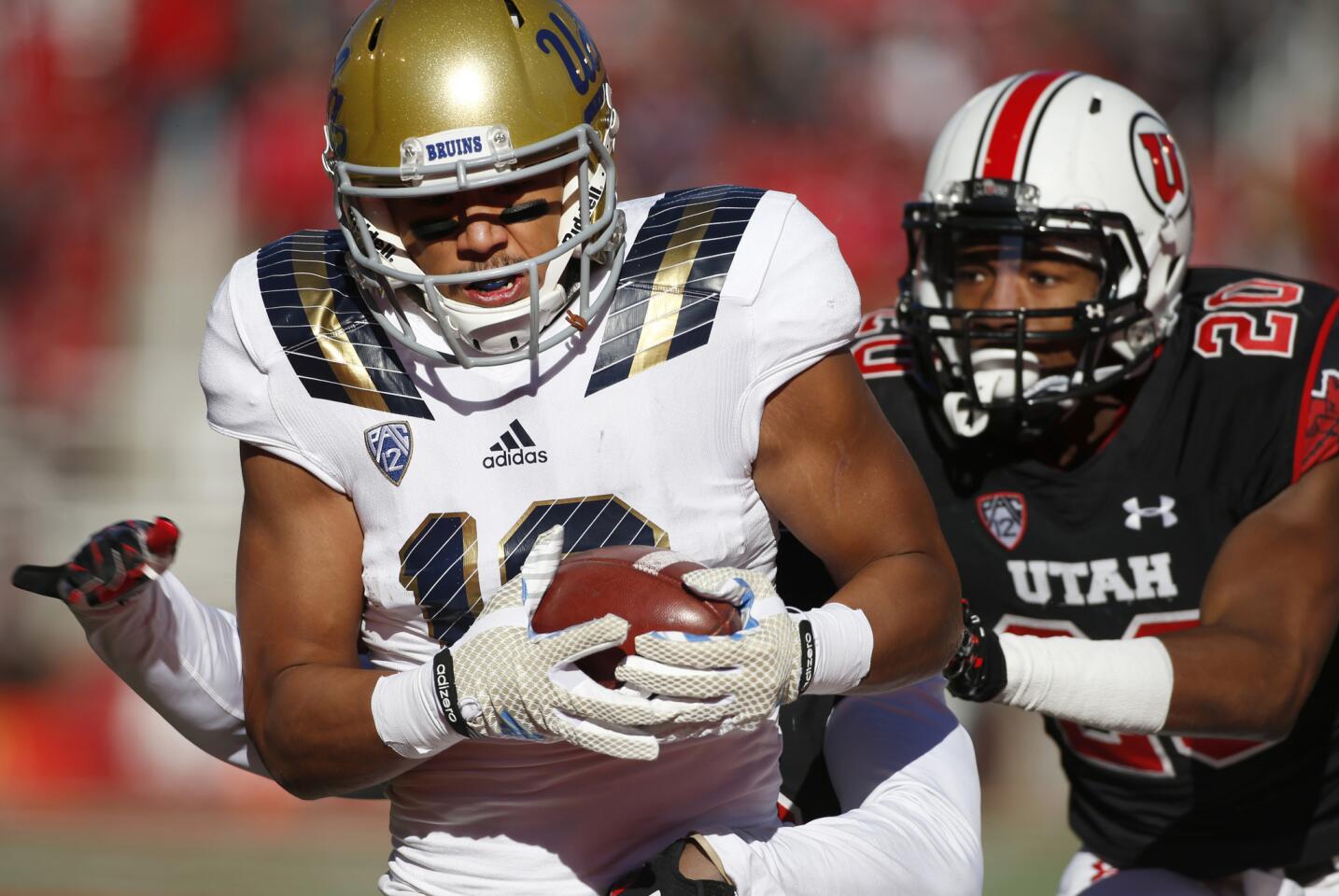
The NFL has found homes for former receivers who made the move to tight end - Jordan Reed in Washington, and Richard Rodgers in Green Bay are two examples. Thomas Duarte may be the next one. Duarte is athletic and can line up in-line, in the slot or out wide to create matchup problems. Even as a seventh-rounder, he could push Jordan Cameron for the starting job.
(George Frey / Getty Images)Advertisement
Chad Greenway said 2016 will be his final season, and while the Vikings already have two other solid starters in Anthony Barr and Eric Kendricks, they needed another player to groom behind Greenway. Kentrell Brothers fell to the fifth round because of his smallish frame (6-foot, 244 pounds) and lack of ideal athleticism. But there’s no denying his production at Missouri (273 total tackles in his final two seasons). He’s an instinctive player who can be coached under Mike Zimmer and eventually start.
(Brynn Anderson / AP)
Tom Brady has Rob Gronkowski, Julian Edelman, Martellus Bennett and Nate Washington as viable receiving options. But you can’t have enough pass-catchers, which is why the Patriots took Malcolm Mitchell in the fourth round. The Georgia standout is an athletic receiver with big 10 3/8-inch hands and crisp route-running ability, but he fell because of two knee injuries.
(Brynn Anderson / AP)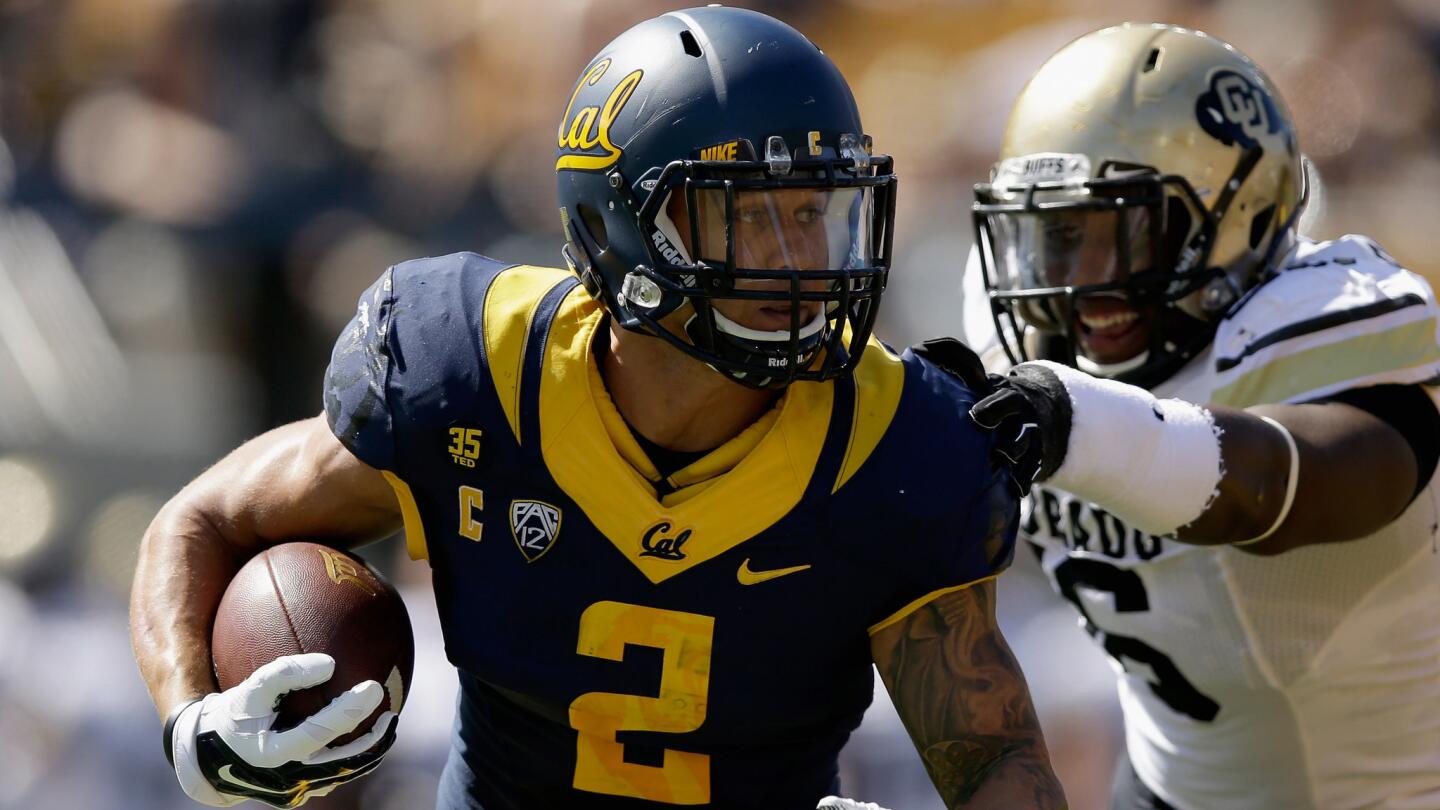
The Saints lost Khiry Robinson to the Jets in free agency, and C.J. Spiller disappointed in his first season in New Orleans. Seventh-rounder Daniel Lasco impressed at the East-West Shrine Game and tested very well at the Combine (4.46 40-yard dash, 41 1/2-inch vertical, 11-3 broad jump), but fell in the draft because hip and ankle injuries limited him to three games in 2015. If he can stay healthy, he could be an immediate contributor on special teams and has a shot to supplant Spiller as the team’s speedy receiving back.
(Ezra Shaw / Getty Images)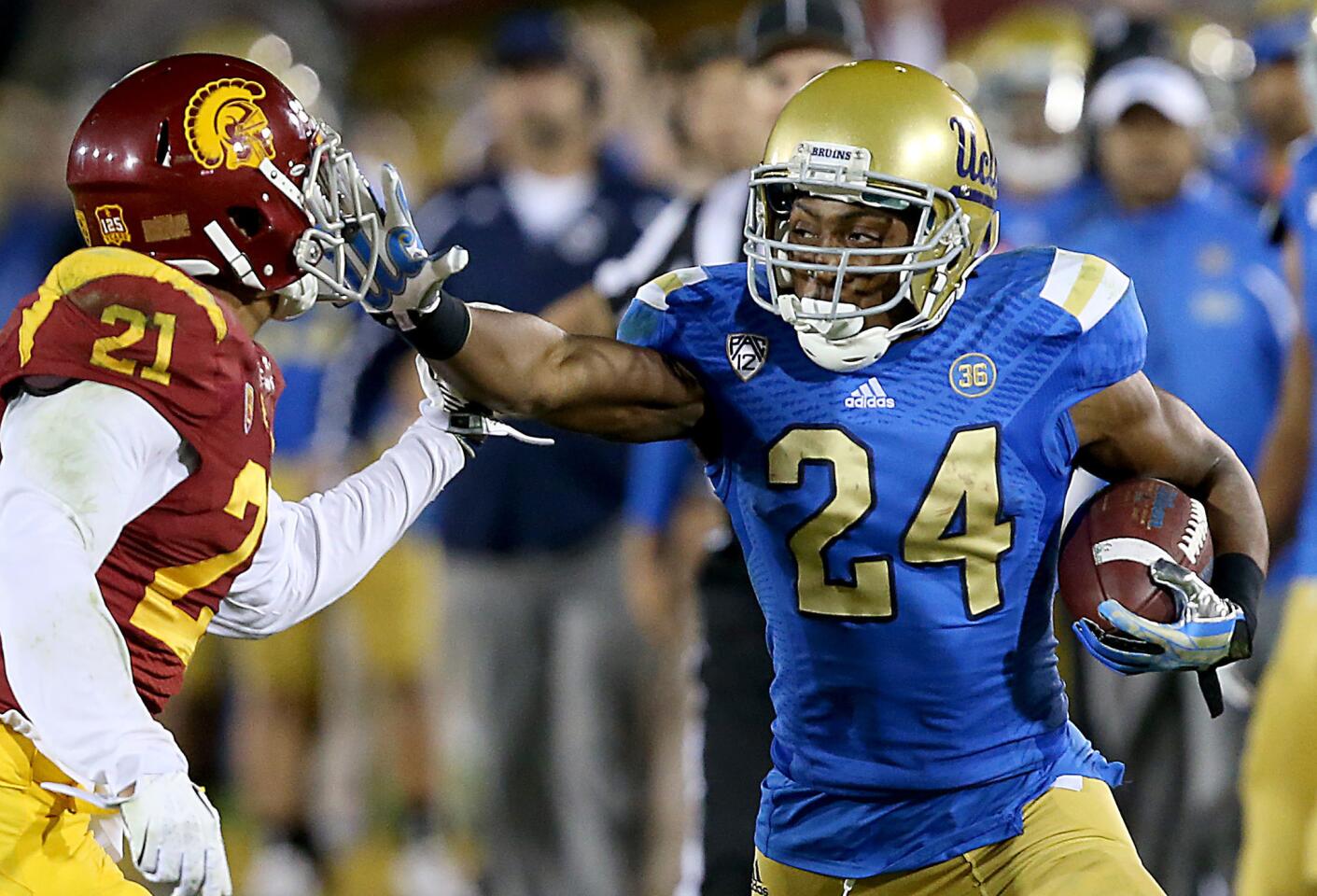
The Giants’ committee approach in the backfield last season was a big reason why they finished eighth-worst in rushing yards and sixth-worst in rushing touchdowns last season. Only when they handed the reins to Rashad Jennings in the final month of the season did a Giants back finally have a 100-yard game. So by drafting UCLA’s Paul Perkins in the fifth round, the Giants could be in position to eliminate the committee approach. Perkins is a slippery running back who regularly makes highlight-reel cuts and fights for extra yards, and while he doesn’t have the size of a three-down back, his elusiveness and vision may be enough to earn him a prominent role in the Giants’ backfield.
(Luis Sinco / Los Angeles Times)Advertisement
The Jets traded a fifth-round pick for Ryan Clady to replace D’Brickashaw Ferguson at left tackle, but Clady has played in just 18 of the last 48 games due to injury, and right tackle Breno Giacomini is a possible cap cut. The Jets needed depth in the short-term and an eventual starter in the long-term, which is why they traded back into the fifth round to take Brandon Shell. The South Carolina product is the great-nephew of Hall of Famer Art Shell and a powerful run blocker. He could become the eventual starter on the right side if he can get better in pass protection.
(Wade Payne / AP)
The Raiders certainly have a “type” of player they prefer along the offensive line - big, powerful maulers. Their projected five starters average 6-4 and 325 pounds. At 6-6 and 329 pounds, LSU guard Vadal Alexander fits that mold. The seventh-rounder has a massive frame and long arms, which help him overpower defenders, though he doesn’t have ideal athleticism, which probably contributed to his draft-day slide. He projects as a swing lineman who could see occasional snaps at left guard or right tackle.
(Brynn Anderson / AP)
The Eagles went into the draft looking for secondary depth. They got a potential starter in the seventh round with Jalen Mills. He played outside cornerback, slot corner and safety in four seasons at LSU, but a broken leg last season and other off-field concerns contributed to a lower-round selection. On the field, though, he could be a valuable contributor at either safety - his official position - or outside cornerback.
(John Bazemore / AP)
The Steelers have a knack for finding gems midway or late in the draft, or as undrafted free agents - Antonio Brown (sixth round), Emmanuel Sanders (third), Kelvin Beachum (seventh) and William Gay (sixth), to name a few. They hope Javon Hargrave could be the latest steal. The third-round defensive tackle racked up 35 sacks in his final three seasons at South Carolina State and was a favorite among draft analysts because he moves very well at 6-1, 309 pounds. He could bring a nice jolt of energy as a nose tackle or as a sub rusher in place of Stephon Tuitt or Cameron Heyward.
(Chris O’Meara / AP)Advertisement
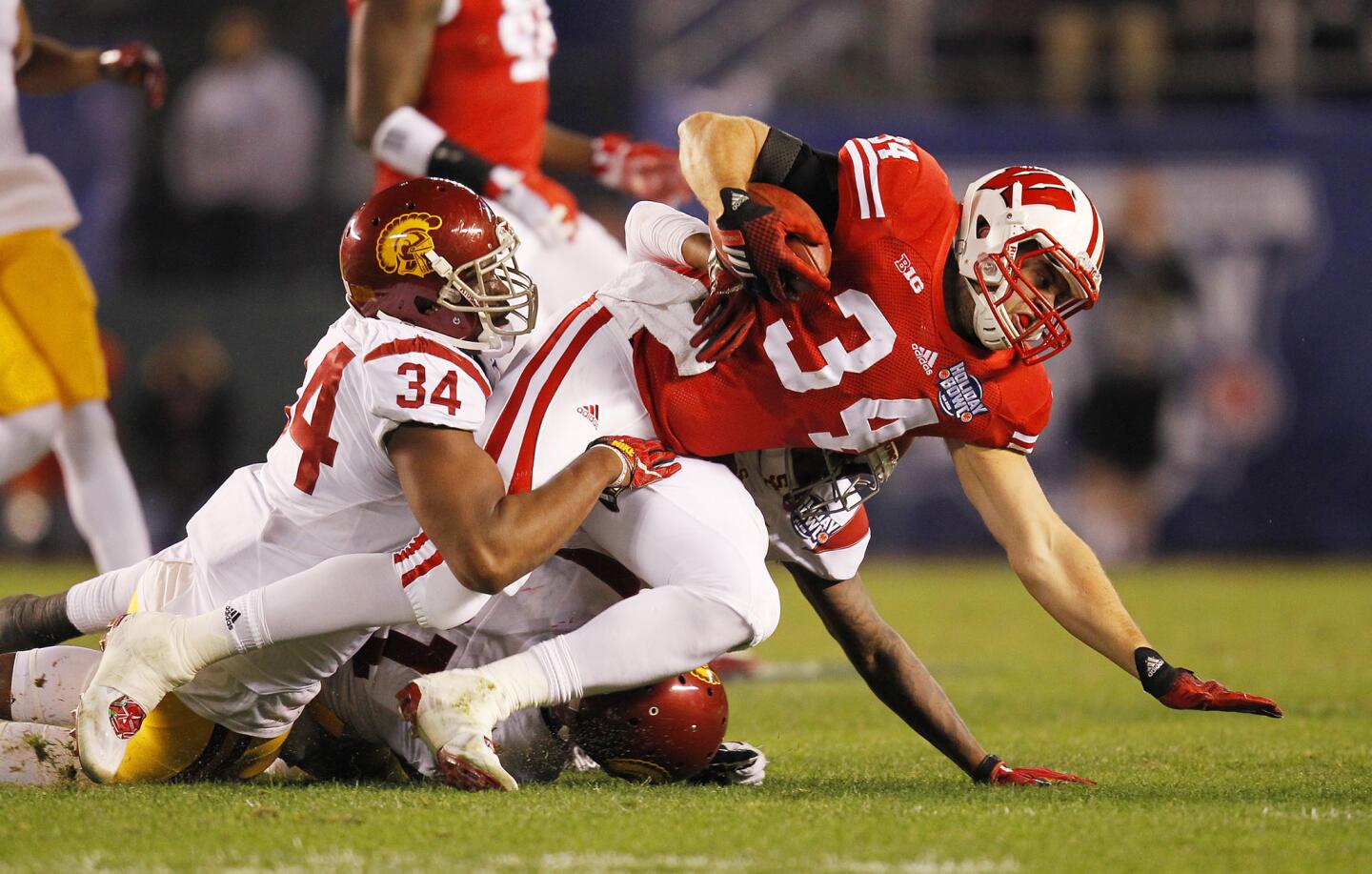
Derek Watt -- yes, he J.J. Watt’s younger brother -- went to Wisconsin, where he helped open up running lanes for a running back who ran for 2,587 yards and 29 touchdowns in 2014. That running back? Melvin Gordon, the Chargers’ first-round pick last year. Gordon’s first NFL season was a disappointment, so the Chargers hope reuniting Gordon with his lead blocker in college could help fix their running game woes.
(K.C. Alfred / San Diego Union-Tribune)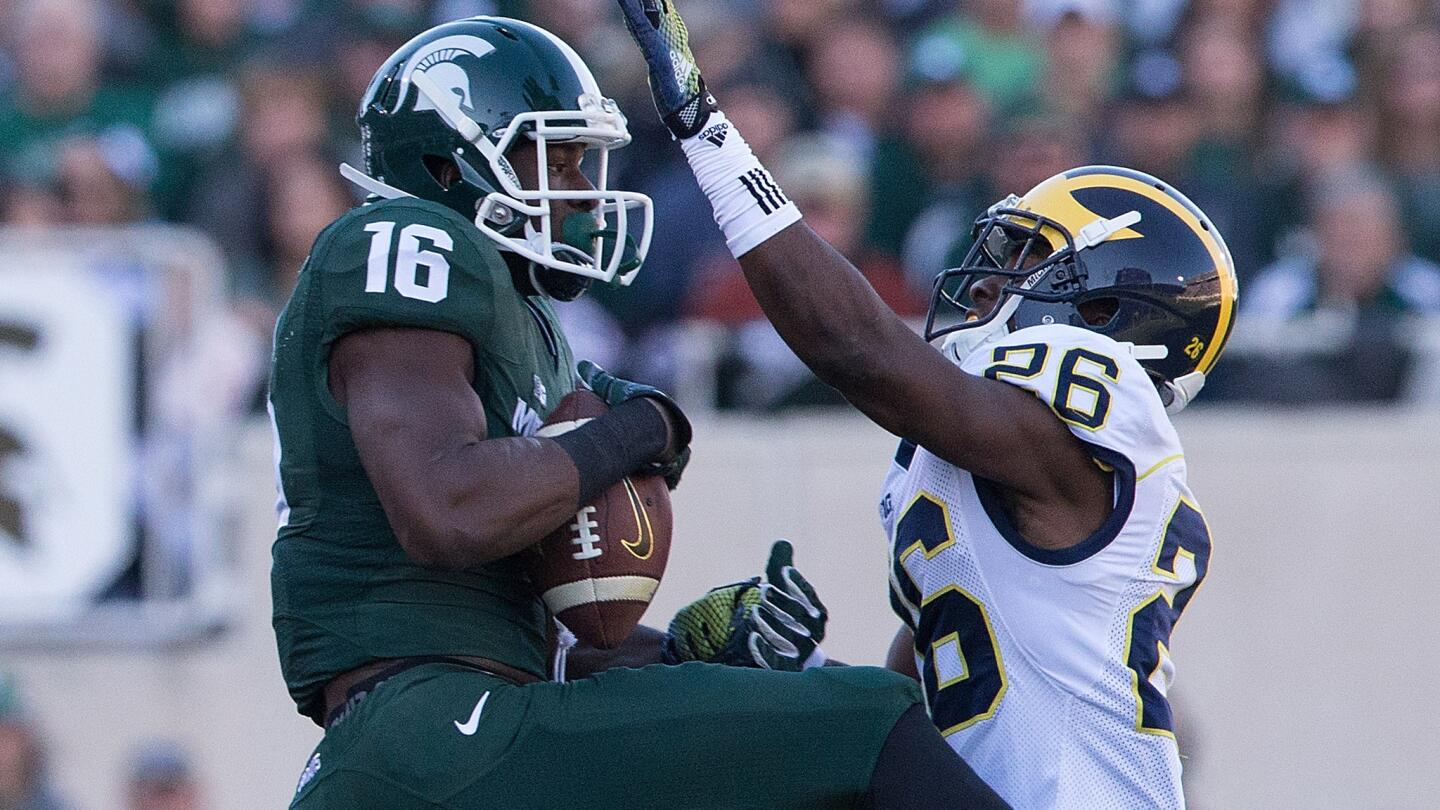
The 49ers let Aaron Burbridge go, and aside from Torrey Smith, they don’t have much proven depth. So they spent a sixth-round pick on Aaron Burbridge, a productive four-year player for Michigan State. Burbridge isn’t the most athletic receiver, but he has good body control and can make tough catches. He could find a role as a big slot receiver in the same way that the 49ers used Boldin.
(Leon Halip / Getty Images)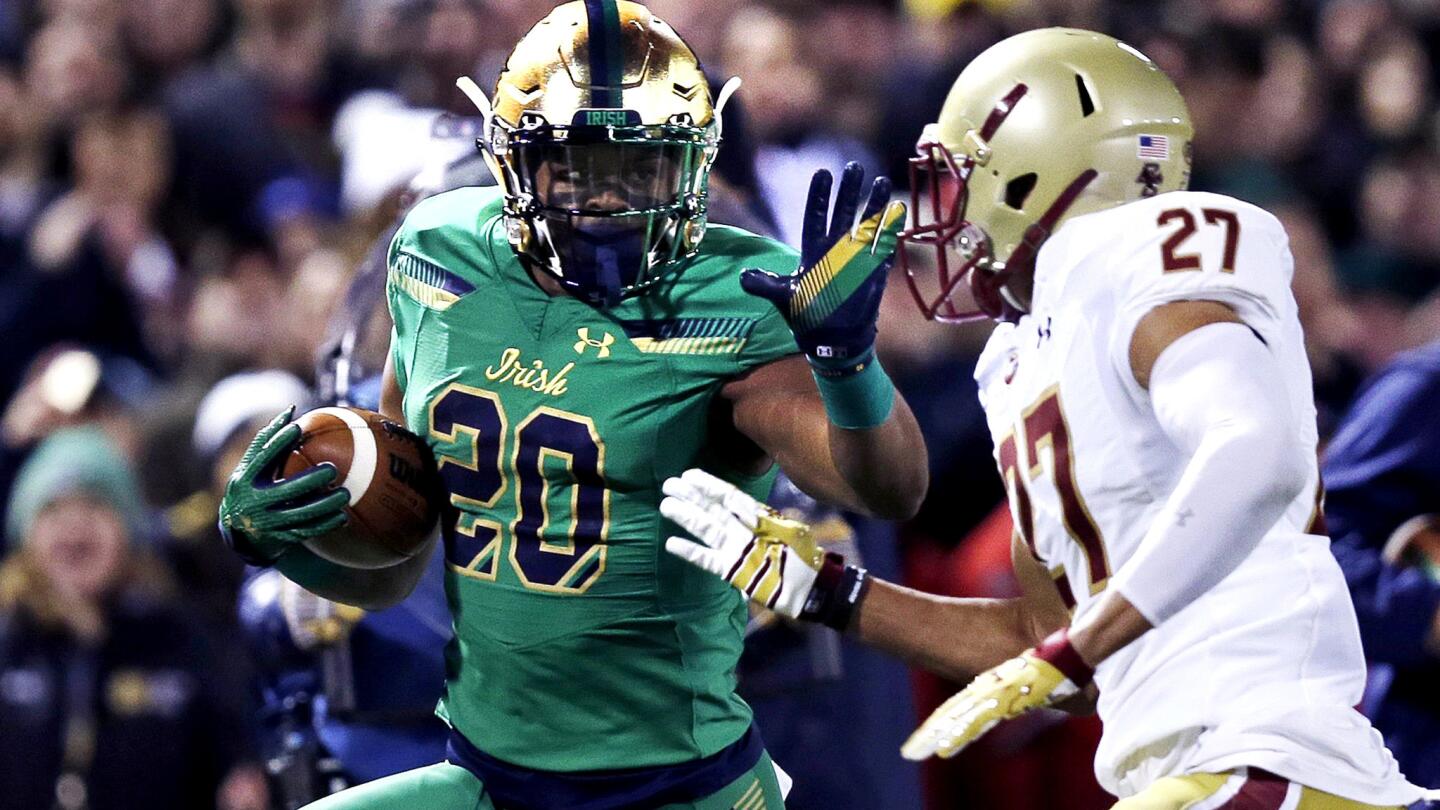
Marshawn Lynch (literally) hung up his cleats during the Super Bowl, leaving the Seahawks’ backfield to Thomas Rawls. Still, they needed a third-down back to replace Fred Jackson, who remains unsigned, and they believe C.J. Prosise could be that guy. The third-rounder from Notre Dame is a former wide receiver with excellent athleticism and hands. Prosise likely will be the Week 1 third-down back, but don’t be surprised if Pete Carroll gets creative with how he uses him beyond that.
(Charles Krupa / Associated Press)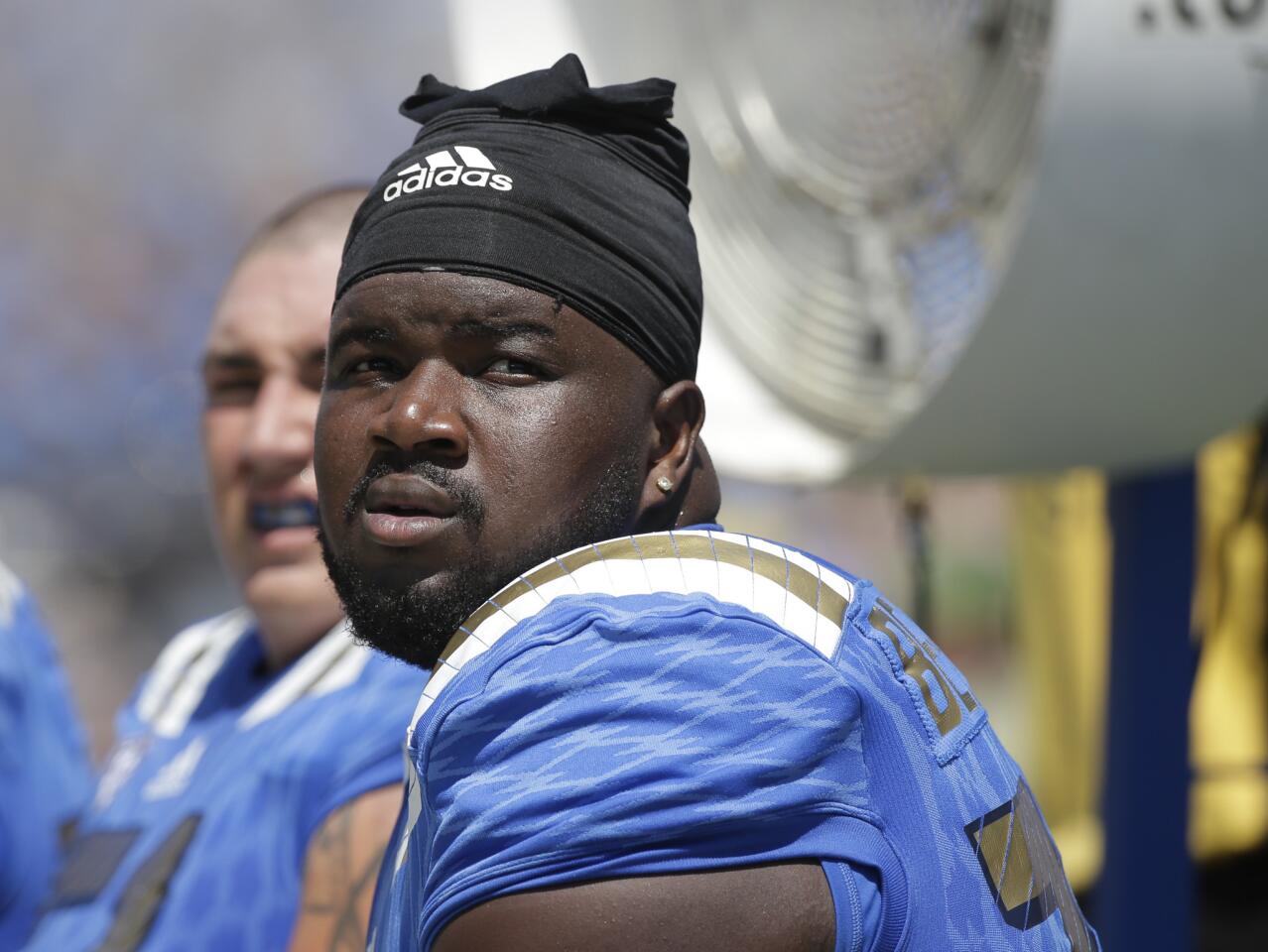
There are two ways to boost a young quarterback’s development. One of those ways is to make sure he stays upright, which is what the Bucs have done since taking Jameis Winston first overall in 2015. They added another big body by taking UCLA’s Caleb Benenoch in the fifth round. Benenoch projects as an athletic swing tackle who can move inside to guard if needed. He’s likely just a backup for now, but he eventually could work his way into the starting lineup or as an eligible tackle in short-yardage situations.
(Jae C. Hong / Associated Press)Advertisement
The second way to help a young QB grow: Receivers. That’s the approach the Titans have taken since they took Marcus Mariota second overall in 2015. Even after drafting two receivers in Dorial Green-Beckham and Tre McBride last year, they added another pass-catcher in fifth-rounder Tajae Sharpe. The UMass product runs good routes despite his lack of ideal athleticism and only dropped three passes on 114 attempts, per Pro Football Focus. The Titans’ depth chart is crowded, but Sharpe could see some time as a big slot receiver.
(Gretchen Ertl / AP)
Washington allowed the seventh-most pass yards in the NFL and the sixth-most rush yards and gave up 4.8 yards per carry (second-worst in the NFL) in 2015. Despite this, they waited until the last day of the draft to add reinforcements along the defensive line, taking Temple’s Matt Ioannidis (pictured, back left) in the fifth round. He isn’t the biggest defensive lineman at 6-3 and 299 pounds, but he’s a powerful, tough player who can play nose tackle or five-technique end. Given the departures of Terrance Knighton and Jason Hatcher, Ioannidis could see a good amount of playing time as a rookie.
(Karl B DeBlaker / AP)






